Top Drone-Friendly Scenic Spots in the Dominican Republic (and Local Regulations)
Exploring Drone-Friendly Destinations in the Dominican Republic
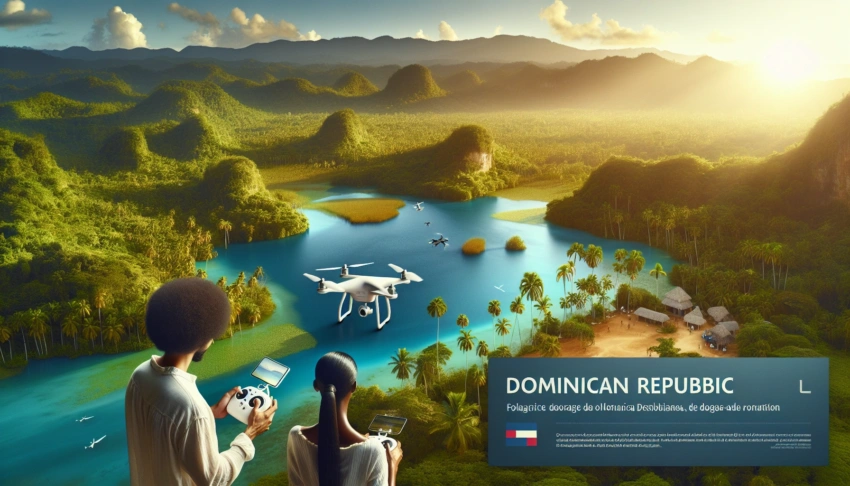
Top Drone-Friendly Scenic Spots in the Dominican Republic (and Local Regulations)
The Dominican Republic is a paradise for drone enthusiasts, offering a plethora of stunning locations perfect for capturing breathtaking aerial views. Whether you’re a seasoned pilot or a novice eager to explore, the country’s diverse landscapes promise countless opportunities for awe-inspiring drone photography.
1. Punta Cana: Beaches and Beyond
Punta Cana is often hailed as a crown jewel of the Dominican Republic, and for a good reason. Its pristine beaches, azure waters, and lush coconut groves create a canvas that’s nothing short of magical when viewed from above. Drone enthusiasts will find Punta Cana’s coastline irresistible, with its vast stretches of white sand beaches that seem to stretch endlessly into the horizon.
But Punta Cana’s allure extends beyond its beaches. Take your drone inland and discover the verdant landscapes of the Indigenous Eyes Ecological Park, where freshwater lagoons offer a unique contrast to the coastal scenery. Don’t miss capturing the symmetry and artistry of the region’s golf courses, like the famed Punta Espada Golf Club, where emerald greens meet the azure ocean — a sight truly best appreciated from above.
2. Jarabacoa: The Dominican Alps
Nestled within the heart of the Dominican Republic lies Jarabacoa, often referred to as the “Dominican Alps.” This region is a drone photographer’s dream with its stunning mountainous landscapes, lush pine forests, and cascading waterfalls. The aerial views offer a perspective that is both majestic and serene, capturing the essence of nature’s untouched beauty.
Fly your drone over the verdant peaks of the Cordillera Central mountain range for breathtaking panoramic views. The area is home to Pico Duarte, the highest peak in the Caribbean, offering an ambitious yet rewarding challenge for those looking to capture something truly extraordinary. Additionally, the Yaque del Norte River winds its way through the landscape, offering dynamic shots of rapids and serene stretches that highlight the diversity of the terrain.
3. Samaná Peninsula: A Hidden Gem
The Samaná Peninsula is an idyllic destination that remains a hidden gem for many travelers and drone enthusiasts alike. This area boasts some of the most stunning natural landscapes in the Dominican Republic, with its untouched beaches and dramatic cliffs providing the perfect backdrop for aerial photography.
One of the standout features of the Samaná Peninsula is its waterfalls, particularly El Limón Waterfall. From a drone’s vantage point, the cascading water set against the lush tropical backdrop is nothing short of breathtaking. The peninsula’s remote beaches, such as Playa Rincón and Playa Frontón, offer pristine sands and crystal-clear waters, ideal for capturing the beauty of the Caribbean.
These drone-friendly destinations in the Dominican Republic offer a diverse array of landscapes, from sun-kissed beaches to lush mountains, each providing a unique opportunity to capture stunning aerial views. Whether you’re drawn to coastal paradises or mountainous retreats, the Dominican Republic will not disappoint.
Understanding Drone Regulations in the Dominican Republic
When planning your drone adventures in the Dominican Republic, it’s essential to familiarize yourself with the local regulations to ensure a safe and hassle-free experience. Whether you’re capturing the turquoise waters of Punta Cana or the lush greenery of Jarabacoa, abiding by the rules is key to a smooth flight.
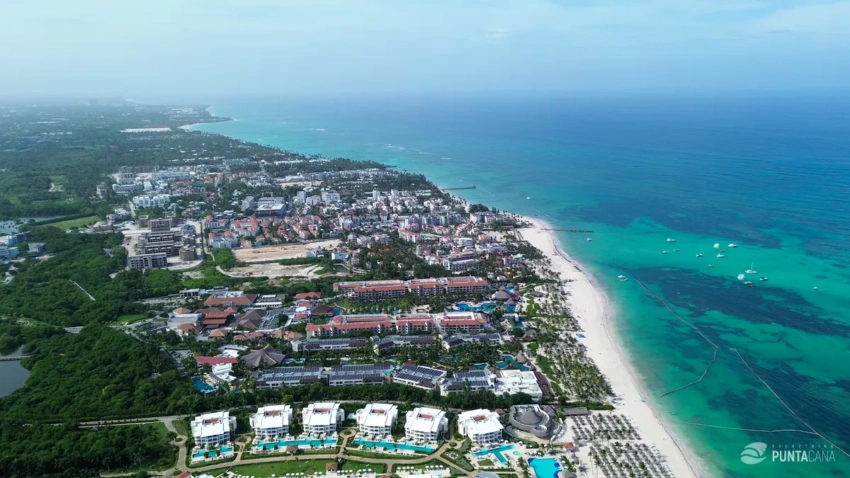
Aerial view of Punta Cana
1. General Drone Laws to Follow
Flying a drone in the Dominican Republic can be a thrilling experience, but it’s crucial to know the general laws governing drone operations. The Dominican Institute of Civil Aviation (IDAC) is the regulatory body overseeing drone usage. Here are some key rules to keep in mind:
- Drone operators must be at least 18 years old.
- Maintain a visual line of sight with your drone at all times.
- The maximum altitude for drone flights is 400 feet above ground level.
- Do not fly over populated areas, including beaches, sporting events, or large gatherings.
- Respect no-fly zones, particularly near airports and military installations.
Adhering to these basic rules ensures you remain compliant with local regulations while enjoying the stunning vistas the Dominican Republic has to offer.
2. Obtaining Necessary Permissions
Before taking to the skies, make sure to secure the appropriate permissions, especially if you’re planning to fly in restricted areas or for commercial purposes. Here’s a breakdown of the permission process:
Drone Permission Requirements
| Type of Flight | Permission Required | Application Process |
|---|---|---|
| Recreational | No specific permit | Follow general laws |
| Commercial | Yes | Apply through IDAC |
| Restricted Areas | Yes | Special authorization needed |
For commercial drone operators, registering with IDAC is mandatory. The process involves submitting an application detailing the intended flight plan, drone specifications, and insurance proof. Remember, preparation is key, so start the application process well in advance of your planned flight dates.
3. Safety and Privacy Considerations
Safety and privacy are paramount when operating drones. Here are some tips to ensure you fly responsibly:
- Check weather conditions before flying to avoid unexpected disturbances.
- Ensure your drone is in good working condition and your batteries are fully charged.
- Respect the privacy of others by avoiding filming or photographing people without consent.
- Be mindful of wildlife and avoid disturbing natural habitats.
By prioritizing safety and respecting privacy, you contribute to a positive drone flying culture in the Dominican Republic, ensuring that these breathtaking landscapes remain accessible to everyone.
Our Best Tours in Punta Cana
While navigating the drone regulations, don’t miss out on our exclusive tours that offer incredible opportunities to capture the Dominican Republic’s beauty from unique perspectives. Book your adventure today and experience the magic of Punta Cana like never before.
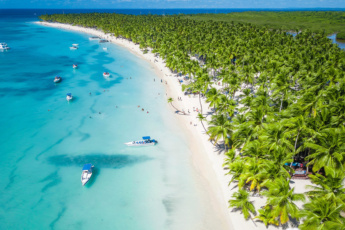
Saona Island Excursion - Caribbean Paradise
from $75 Read more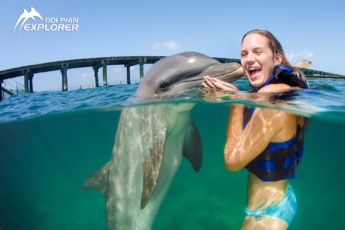
Swimming with Dolphins in Punta Cana - Top Adventure 2025 (50 minutes)
from $149 Read moreTips for Capturing Stunning Aerial Footage
When it comes to drone photography, capturing stunning aerial footage is an art that combines timing, technique, and technology. Whether you’re a seasoned pilot or a newbie, these tips will help you elevate your drone shots to new heights.
1. Best Times of Day for Drone Photography
Capturing the perfect shot isn’t just about pointing your drone and snapping away; it’s about knowing when to fly. The time of day can dramatically impact the quality and mood of your aerial photos.
- Golden Hour: This magical time occurs shortly after sunrise and before sunset, providing soft, warm light that enhances colors and creates dramatic shadows. Perfect for capturing landscapes and seascapes in the Dominican Republic.
- Blue Hour: Occurring just before sunrise and after sunset, the blue hour bathes your subjects in a soft blue hue, ideal for capturing serene and moody shots.
- Midday: While often avoided due to harsh shadows, midday can offer unique opportunities, especially when shooting over water or capturing the vibrant tropical colors found in places like Punta Cana.
2. Equipment Essentials for Drone Enthusiasts
Having the right gear is crucial for capturing breathtaking aerial footage. Here’s a checklist of essential equipment every drone enthusiast should consider:
- High-Quality Drone: Invest in a drone equipped with a reliable camera capable of shooting in 4K resolution and equipped with stabilization features.
- Extra Batteries: Longer flight times mean more opportunities to capture that perfect shot. Always carry extra batteries to avoid missing out on golden moments.
- ND Filters: Neutral Density filters are game-changers for controlling exposure and achieving cinematic quality, especially under the bright Caribbean sun.
- Portable Charger: Ensure your devices stay powered throughout your shoot with a portable charger, especially when exploring remote areas of the Dominican Republic.
- Backup Storage: Safeguard your footage with additional memory cards and a portable hard drive, ensuring you never run out of space for your high-resolution shots.
3. Editing Your Aerial Photos and Videos
Once you’ve captured your shots, it’s time to enhance them with some post-processing magic. Editing can turn a good shot into a breathtaking masterpiece.
- Software Selection: Choose editing software that suits your skill level. Adobe Lightroom and Photoshop are popular among professionals, while beginners might prefer user-friendly options like Skylum Luminar or Snapseed.
- Color Correction: Enhance the natural beauty of the Dominican landscapes by adjusting white balance, contrast, and saturation. This can make your images pop and reflect the vibrant hues of the tropics.
- Stabilization: For video footage, use stabilization tools within your editing software to smooth out any unintended jitters or vibrations.
- Creative Touches: Experiment with filters, overlays, and creative cropping to add a unique flair to your aerial footage, making it truly one-of-a-kind.
By mastering these tips and techniques, you’ll be well on your way to capturing stunning aerial footage that does justice to the breathtaking beauty of the Dominican Republic. So, prepare your gear, plan your timing, and let your creativity soar.
Respecting the Environment and Local Communities
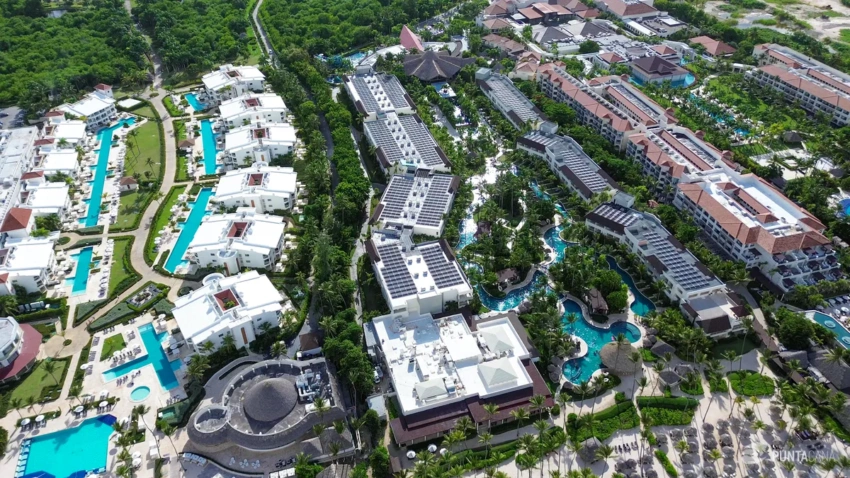
Aerial view of Punta Cana
Embarking on a drone adventure in the Dominican Republic isn’t just about capturing breathtaking vistas; it’s also an opportunity to interact responsibly with the environment and the communities that call this paradise home. By graciously weaving respect into your drone activities, you can ensure your visit leaves a positive mark.
1. Leave No Trace Principles
As a drone enthusiast, respecting the environment should be at the forefront of your activities. The Leave No Trace principles provide a robust framework for ensuring minimal environmental impact:
- Travel and Camp on Durable Surfaces: When setting up your drone equipment, choose durable surfaces like rocks or sand to prevent damage to vegetation.
- Dispose of Waste Properly: Always carry out what you bring in, including batteries, packaging, and any other materials.
- Minimize Campfire Impact: While drones don’t require campfires, the principle extends to minimizing carbon footprint by using energy-efficient batteries.
- Respect Wildlife: Keep drones at a respectful distance from wildlife to avoid causing stress or disturbance.
Adopting these principles not only safeguards the natural beauty of the Dominican Republic but also ensures that future visitors can enjoy its splendor.
2. Engaging with Local Communities
Engaging with local communities is a delightful aspect of your drone-flying journey. Here are some tips to ensure respectful interactions:
- Understand and Respect Cultural Nuances: Each community has its customs and traditions. Taking the time to learn about and respect these nuances can enhance your experience.
- Seek Permission: Before flying your drone over private lands or near communities, it’s courteous to seek permission. This can prevent misunderstandings and foster goodwill.
- Share Your Experience: Consider sharing your drone footage with local communities. Not only can this create a bond, but it also allows locals to see their homeland from a new perspective.
By opening lines of communication, you contribute to a mutual understanding and appreciation of each other’s worlds.
Our Best Tours in Punta Cana
To immerse yourself fully and respectfully in the local culture and environment, consider joining our expertly curated tours. These experiences not only offer breathtaking views but also allow for meaningful interactions with the local communities.
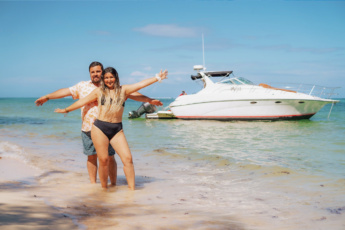
Punta Cana Private Boat Trip at the Best Price - 3-Hour Exclusive Tour with Snorkeling (from Jellyfish to Cabeza de Toro)
from $590 Read more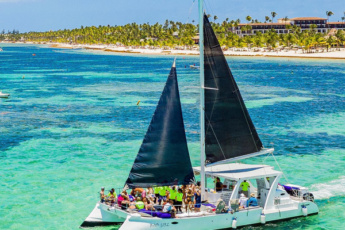
Power Cruise – Punta Cana Party Experience on the Bad Girl Catamaran
from $65 Read more3. Supporting Local Conservation Efforts
Contributing to local conservation efforts is a fulfilling way to give back to the communities and natural settings that provide the backdrop for your drone adventures:
- Participate in Conservation Programs: Many local organizations offer programs aimed at preserving natural habitats. Joining these initiatives can have a direct impact.
- Donate to Environmental Causes: Financial contributions to reputable local conservation organizations can support ongoing preservation efforts.
- Promote Awareness: Use your platform, whether it’s social media or a personal blog, to highlight the importance of conservation in the Dominican Republic.
Supporting conservation not only protects the vibrant ecosystems of the Dominican Republic but also helps maintain the beauty and integrity of the locations you love to explore.
In essence, while capturing the stunning aerial vistas of the Dominican Republic, you’re encouraged to weave a narrative of respect and responsibility, ensuring that both the environment and local communities thrive alongside your adventurous pursuits.
Frequently Asked Questions
What are some top drone-friendly scenic spots in the Dominican Republic?
The Dominican Republic offers a variety of scenic spots perfect for drone photography. Some top locations include Punta Cana for its stunning beaches, Samaná Peninsula for its lush landscapes and waterfalls, and Bahía de las Águilas for its pristine and remote coastline. Other captivating spots include Los Haitises National Park and the vibrant cityscapes of Santo Domingo.
Are there any specific regulations for flying drones in the Dominican Republic?
Yes, there are regulations you need to follow when flying drones in the Dominican Republic. Drone operators must adhere to rules set by the Dominican Institute of Civil Aviation (IDAC), which include registering drones weighing more than 4.4 pounds (2 kg), maintaining a line of sight, and not flying over populated areas or near airports.
Do I need a permit to fly a drone in the Dominican Republic?
If your drone weighs more than 4.4 pounds (2 kg), you will need to register it with the Dominican Institute of Civil Aviation. However, for lighter drones used for recreational purposes, no specific permit is required. Always check the latest regulations before flying, as rules can change.
Can I fly a drone in national parks in the Dominican Republic?
Flying drones in national parks is generally restricted to protect wildlife and the environment. For specific permissions, it is recommended to contact the park authorities or the Ministry of Environment and Natural Resources prior to your visit.
What is the maximum altitude allowed for flying drones in the Dominican Republic?
The maximum altitude for flying drones in the Dominican Republic is 400 feet (120 meters) above ground level. Exceeding this limit is prohibited to ensure the safety of other airspace users.
Are there any no-fly zones for drones in the Dominican Republic?
Yes, there are no-fly zones in the Dominican Republic, which include areas around airports, military bases, and government buildings. It is important to consult a current map of restricted zones or use a drone app that provides updated airspace information.
What are the penalties for violating drone regulations in the Dominican Republic?
Violating drone regulations can result in fines, confiscation of the drone, or other legal actions. It is crucial to familiarize yourself with the local laws and comply with them to avoid any penalties.
How can I ensure a safe and responsible drone flying experience in the Dominican Republic?
To fly safely and responsibly, always maintain a visual line of sight with your drone, respect privacy by avoiding flying over private properties, and stay informed about local regulations and weather conditions. Consider joining local drone communities for tips and guidance.
Is it possible that drone regulations in the Dominican Republic may change?
Yes, drone regulations can change, so it’s important to stay informed about the latest rules by checking with the Dominican Institute of Civil Aviation or local authorities before flying.
Keep in mind that this information may not be up-to-date, and consulting a local source is advised.
